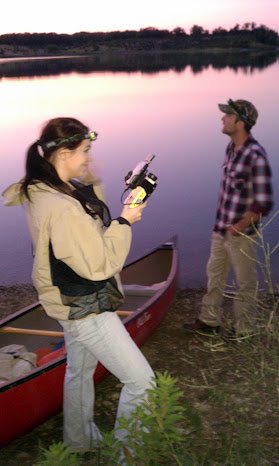Celebration of Scholars
Monitoring Bat Activity Over Water And Land Routes
 Name:
Alex Nelson
Name:
Alex Nelson
Major: Biology & Music
Hometown: Red Wing, MN
Faculty Sponsor:
Other Sponsors:
Type of research: SURE
Funding: SURE
 Name:
Sami Beard
Name:
Sami Beard
Major: Biology
Hometown: Valparaiso, IN
Faculty Sponsor:
Other Sponsors:
Type of research: SURE
Funding: SURE
Abstract
Wisconsin is home to seven common bat species and three of the major bat hibernacula in the Midwest. To understand habitat use in the summer months and how best to monitor use over time, we monitored bat activity from June-August 2012 in five different habitat sites in Kenosha County, WI. We compared bat activity levels among these sites and between different route types. Routes were trails on land, or routes from within a body of water. Five different habitat sites were surveyed with an Anabat SD2 bat detector. The bats’ echolocation calls were analyzed using AnalookW software and were classified as being from either a high frequency (>35 kHz) bat or a low frequency (<35 kHz) bat. We found more overall bat activity when monitoring from water routes than land. When separated into phonic groups, there was more high frequency bat activity detected from water routes. When comparing route types, land routes showed significantly more low frequency bat activity. The results indicate that there is a potential bias in estimating levels of bat activity depending on route type. These results could inform how organizations define acoustic monitoring protocols when they are used to estimate general levels of bat activity before and after populations become affected by White Nose Syndrome.
